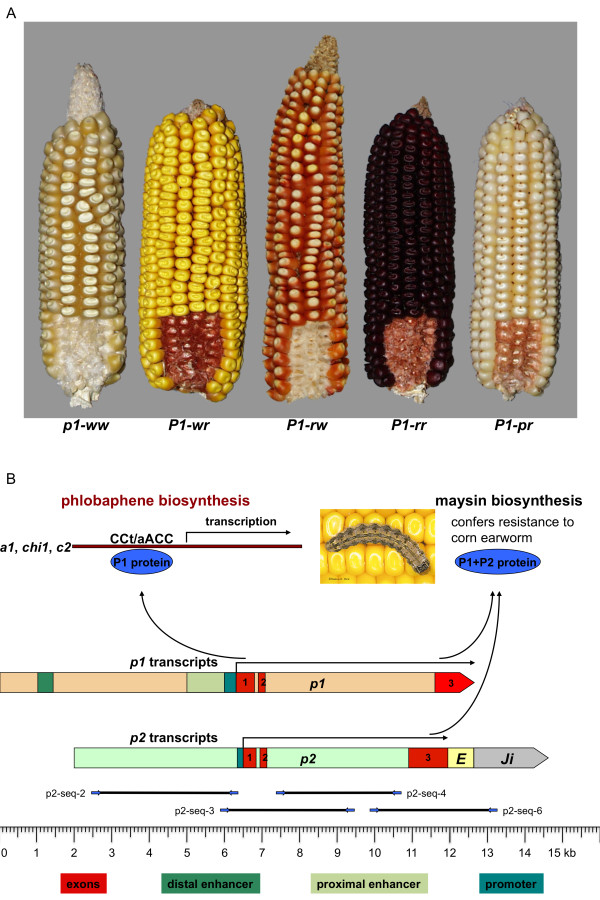Figure 1.
Phenotype, structure and function of p1 and p2 alleles. (A) p1 alleles. p1 alleles are phenotypically classified according to their pericarp (i.e. the outer layer of the kernel) and cob glume pigmentation. The first suffix of the allele designation refers to pericarp color (r for red, w for white or colorless, p for patterned), while the second suffix stands for glume color. (B) Genomic structure of p1 and p2 alleles. p1 alleles with the exception of P1-rr and p2 alleles contain three almost identical exons depicted in red. They also share a basal promoter sequence. However, enhancer regions that were identified in P1-rr are absent from p2. p regulatory elements are drawn in shades of green. The p2 coding sequence is flanked by fragments of Eninu (E) and Ji (J) retrotransposons. The P1 protein is a Myb-like transcriptional regulator of the phlobaphene biosynthesis pathway that activates transcription of the target genes a1, chi1 and c2 by binding to a CCt/aACC site. p1 is also a QTL for maysin accumulation. Maysin is a C-glycosyl flavone found in silk that confers resistance to corn. earworm (Helicoverpa zea, Boddie). While p2 does not control phlobaphene pigmentation, it is involved in maysin synthesis. PCR primers designed for p2 allele cloning and sequencing are indicated. Corn earworm image courtesy of Marlin E. Rice, Iowa State University Department of Entomology http://www.ent.iastate.edu/.

